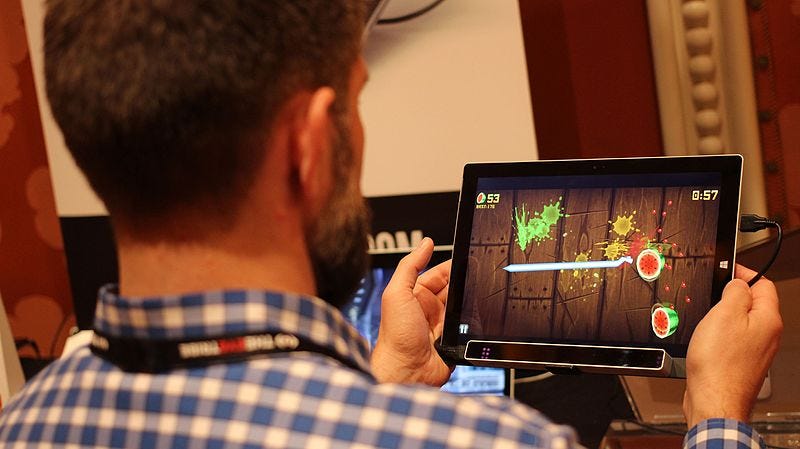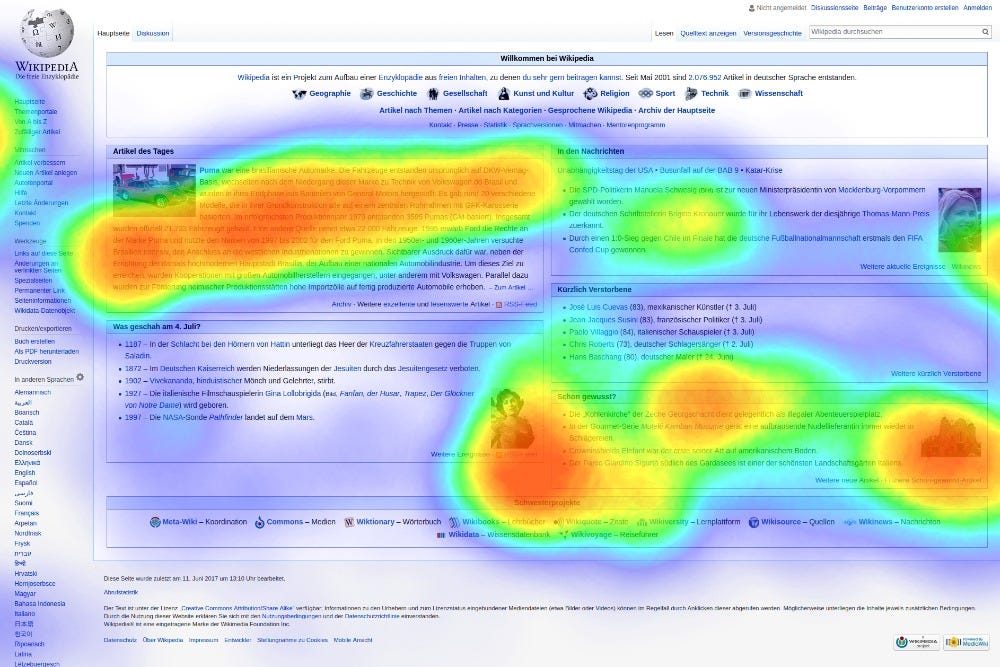Uncovering Hidden Insights: Eye Tracking and Mouse Tracking for UX Research
Putting webcam eye trackers to the test...

Traditionally, UX research methods have relied heavily on qualitative data gathered through user interviews, surveys, or usability tests. These methods give us valuable insights into the conscious experiences of the users. However, a new study by Stone and Chapman, researchers at BioWare and the University of British Columbia, has presented a new approach to delve into unconscious user behaviours.
Eye Tracking Overview
The study employed eye-tracking technology, a method that allows researchers to monitor and record where and when a user's gaze lands on a screen. The central concept in eye tracking is mapping the orientation of the eyes to coordinates on the display screen. This is done by showing points on a calibration screen and recording the gaze positions. The mappings are then used to translate eye orientations into gaze locations during tasks. The end result is a visualisation of where on the screen the user was looking as the interface was used.
Eye-tracking has been a part of UX research for several years, as it provides a window into the user's thought process, revealing what grabs their attention, what they ignore, and how they navigate a user interface. It’s one methodology I’m partial to as I have used for academic and user research. Even though it can be useful, it requires expensive equipment and labs, which makes it out of bounds for most researchers.
Lab based eye tracking systems utilise infrared lights and sensors to accurately map the position of the pupil and corneal reflection. This allows for very precise gaze mapping with high spatial and temporal accuracy. More affordable webcam-based systems use only visible light video feeds, detecting the eyes through image processing algorithms and machine learning models. While webcam eye tracking is less robust, it offers a lower cost option for basic gaze tracking capabilities. Its accuracy and usefulness in UX, however, is still under question.
Mouse Tracking Overview
Meanwhile, mouse tracking aims to record hand motions by tracking the x/y coordinates of the computer mouse cursor over time during real usage. This allows researchers to map out the exploration and decision-making processes of users, as the movement of the mouse can mirror the cognitive processing that drives behaviour. For example, jerky mouse movements can signal user confusion. Mouse tracking provides a window into how users are interacting with and navigating various elements of the interface.
Together, eye tracking and mouse tracking data provide multilayered insights into both user attention and actions. Each method covers certain blindspots of the other. Synthesising the data streams highlights subtle pain points in interfaces, such as navigation inefficiencies, that users themselves may not be consciously aware of.
What did the study find?
Stone and Chapman combined eye-tracking technology with mouse movement tracking attempting to obtain a more comprehensive view of user behaviour. The researchers set up a unique experiment, creating a menu navigation task based on a popular video game. The task was designed to mimic real-world navigation scenarios faced by users, providing a realistic context for assessing user interactions and behaviour. Two different prompts were used during the task: a Direct prompt, which offered clear and concise instructions, and an Indirect prompt, which was more abstract and required the participants to explore the task space in a more unrestricted manner.
The research was conducted with two participant groups; the first group, a local cohort, comprised BioWare employees, while the second group, a remote cohort, consisted of users participating via online platforms. The local cohort was tested using a consumer-grade monitor-mounted eye tracker, while the remote cohort used their own standard webcams. This allowed the researchers to compare the performance and data quality of the two tracking methods in a direct manner.
The researchers found that despite the lower spatial and temporal resolution of the webcam compared to the dedicated eye tracker, the webcam still provided data quality sufficient for a meaningful analysis.
Eye-tracking data revealed where users focused their attention during interactions, which can be crucial in identifying elements of the interface that attract or divert attention. Mouse-tracking data, conversely, provided insight into users' decision-making processes, as the movement of the mouse can reflect the cognitive processes that drive user behaviour.
The study also revealed insights into how users' behaviour varied with the type of prompt. Users took longer and moved both their mouse and eyes more with an Indirect prompt. Furthermore, the researchers used eye tracking and mouse movement data to detect potential points of friction in the UI design. Those were indicated by an increase in eye-hand decoupling, signifying much more eye movement than mouse movement, or an increase in both eye and hand movements, which remained coupled. The coordination (or lack thereof) between eye movements and mouse movements can help identify potential points of friction in a user interface and provide insights into how users are interacting with different elements of the interface.
Implications for UX Research
The findings of this study have several important implications for UX research.
Firstly, they highlight the potential of webcam-based eye tracking as an affordable and accessible tool for UX research, making advanced UX research techniques more accessible to a wider range of businesses and startups. Most users have access to webcams these days making it possible to incorporate eye tracking data in remote usability research. Eye-tracking methodology can be extremely valuable for usability tests since it records the journey without interfering with the users’ natural behaviour. Previous research has also shown promising results with using mobile phone cameras for UX Research.
Secondly, the study underscores the importance of considering unconscious user behaviours. By tracking eye gaze and mouse movements, the researchers were able to identify points of friction that users themselves might not be aware of. This emphasises the need to complement traditional qualitative methods with quantitative approaches that can delve into these unconscious behaviours.
Lastly, the study raises important privacy considerations. As eye-tracking models advance, they could potentially become functionally invisible to the end user. This potential invisibility raises significant privacy concerns that must be considered in future UX research.
In conclusion, this study introduces a potential new approach to UX research, providing valuable insights into unconscious user behaviours and offering new avenues for optimising UX design. Webcam eye-tracking technology and mouse movement tracking have the potential to improve the way we conduct UX research. Curious to see how popular user testing tools might attempt to incorporate such technology to their testing suites in the near future…



